An often-used phrase in Mesoamerican (environmental) politics is la agua es vida: water is life. Even the Aztecs had a strong emphasis on water, and any deity that is related to this realm was per definition of great importance. The Aztec god Tlaloc was no different.
Some of the most important Aztec temples have been dedicated to the water deity. Tlaloc was responsible for imminent and abundant rains. For that reason, he is worshiped to this day by several Mesoamerican cultures. But, he also had a flip side.
Table of Contents
Who Was Tlaloc?
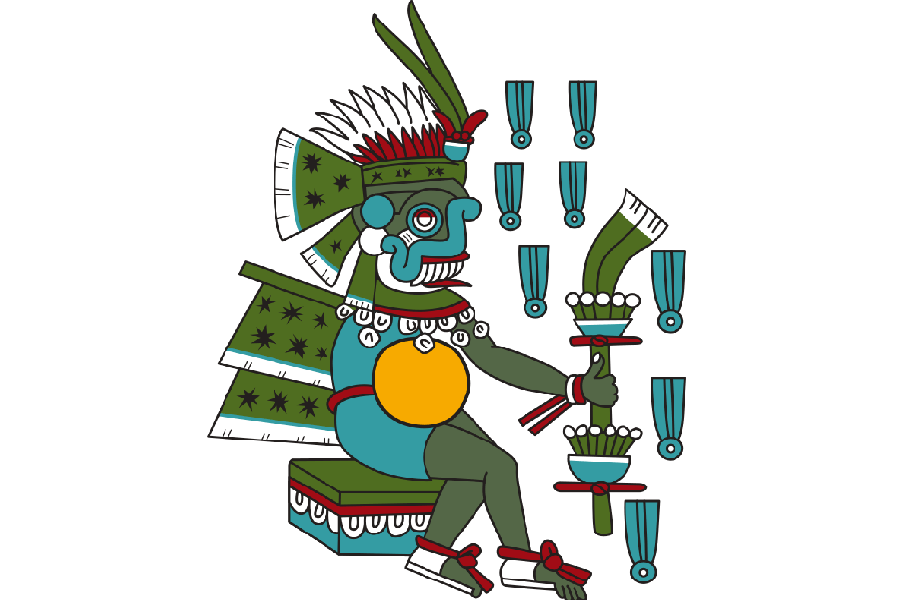
Tlaloc is generally known as an Aztec god related to celestial waters, freshwater lakes, fertility, thunder, and hail. Besides this, he is seen as the patron god of land workers, something which mainly has to do with his ability to give life to crops.
READ MORE: Who Invented Water? History of the Water Molecule
Other than that, he is seen as the governor of the Third Sun, a version of the earth which was dominated by water. According to the Aztecs, we’re currently living in the fifth sun cycle, so Tlaloc might’ve already passed his prime in this version of our planet.
Because water is life, the realms that were controlled by our god were quite vital. It made him one of the most important gods, something that should be recognized by any worshiper of the rain god Tlaloc. How could that be recognized? Mostly through human sacrificial victims.
To Live Or Not To Live
In short, he basically determined whether the Aztecs had access to sufficient resources by giving them the important rainy season they all wished for. While being related to rain and water, he is also related to thunder and hail.
This relation signifies a position that is quite powerful, and legend has it that he was so precise with his thunder that he could kill anyone he wanted. So, Tlaloc was life-giving and deadly at the same time, depending on his mood.
Other Cultures Worshiping Tlaloc
The Aztecs’ ability to conquer and expand their territory left a major mark on Mesoamerican cultures. However, Aztec culture shouldn’t be considered a total replacement for the groups that came before them. Rather, the Aztec culture was a sort of extension that reinterpreted many of the myths and customs that were already there.
We can be certain of that, simply because depictions of Tlaloc can be dated back to periods way before the Aztecs arrived. The importance of the god might’ve changed, but that’s not unusual. In fact, Tlaloc’s importance is changing until this very day.
According to archeologists, the Aztec god of rain was already worshiped at least 800 years before the Aztecs arrived. As far as we know, Tlaloc was already worshiped by the Mayas and the Zapotec. However, they had different names for him: Chaac and Cocijo, respectively. Some evidence suggests that he was even worshiped well before that.

The Life and Nature of Tlaloc
The life of Tlaloc starts in the mythical ‘paradise of origin’, called Tamoanchan. According to Aztec mythology, this is where all life was initiated, during a big ol’ gathering of the gods.
Way before ever descending to earth, Tlaloc had an eventful life. At first, he was married to a goddess that would be known as ‘Quetzal Flower’ – Xochiquetzal. Her beauty represented fertility and youth, something which was praised by many of the other gods in Tamaonchan.
Well, praised might be a bit of an understatement. In fact, she was desired, specifically by one god called Xipe Totec: the Aztec god of agriculture. In line with his deceptive nature, Xipe Totec stole Tlaloc’s wife, leaving Tlaloc in deep grief.
Many of you might be familiar with the term ‘rebound’ after a relationship. Well, Tlaloc was also quite familiar with it. That is to say, it didn’t take Tlaloc very long to remarry.
He quickly obtained a new wife by the name of Chalciuhtlicue, the goddess of water and baptism. A somewhat minor deity, but she sure helped him tremendously. Together, they managed the water and agricultural cycles around the world.
Mount Tlaloc
The Aztecs believed Tlaloc resided at an extinct volcano, located not far to the east of modern-day Mexico City: Mount Tlaloc. The temple at Mount Tlaloc was situated directly east of another great temple of Tlaloc, which was located in Mexico City itself.
More specifically, he would dwell around the mountain caves, where the ancient Aztecs performed sacrifices. Although the Aztec god had multiple wives, Tlaloc would mostly reside solo at Mount Tlaloc.
The summit of Mount Tlaloc still holds the ruins of a Tlaloc shrine where ceremonies and rituals would be carried out. In some versions, the mountain would even be referred to as Tlalocan, which is a certain level of the Aztec heavens. In that sense, it would be the Aztec equivalent of the Garden of Eden: a heaven on earth.
READ MORE: Aztec Religion
What Does Tlaloc Mean?
The name Tlaloc is, of course, not just a name. It’s derived from the Nahuatl word tlalli. In most interpretations, this means something like earth or soil. Sometimes, it’s translated to ‘in the earth’, which could refer to the moisture of soil after rain.
In some other sources, tlalli, or Tlaloc as a whole, is translated to something like ‘the path beneath the earth’, ‘long cave’, or ‘he who is made of the earth’. This would also be in line with the place where the god resided.
While Tlaloc is the Aztec rain god, it seems like his name indicates that his importance has to do with the effect of the rain on the soil. That is, instead of just a focus on the rain itself.
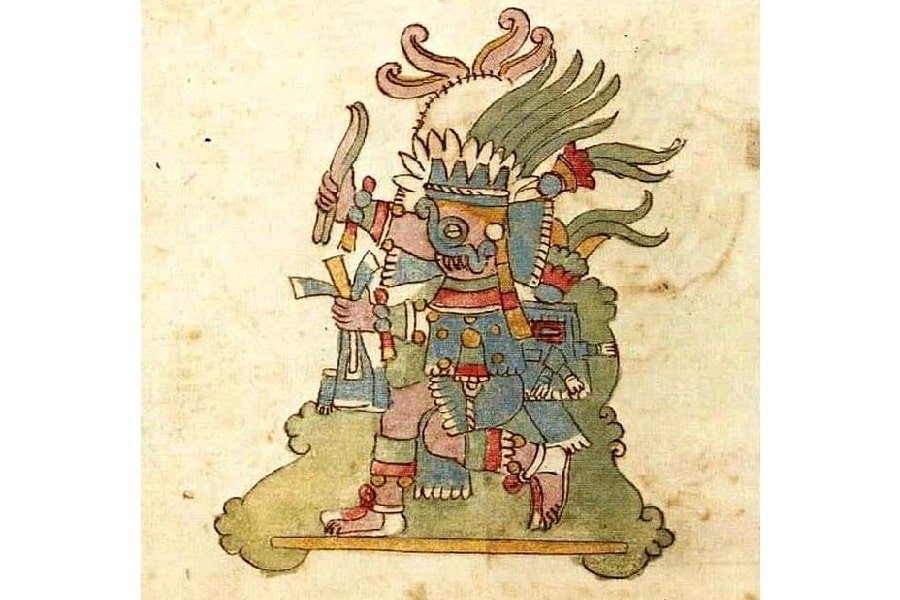
Why Was Tlaloc Feared?
Tlaloc was not just the god of rain, but just as well the god of lightning and death. He was feared because of his ability to use thunder and flooding at will. His ability to use his power in a harmful way can be traced back to four jars that he possessed, each representing different cardinal directions.
READ MORE: 10 Gods of Death and the Underworld From Around the World
All and all, Tlaloc was quite an odd one. Really, nothing was straightforward to the Aztec god. On the one hand, he was able to give life to the world. On the other hand, he was feared for the harm he could do.
Complexity of Tlaloc
Tlaloc being an odd figure also means that the stories about him in Aztec mythology are quite hard to understand. In particular, this applies to the meaning of the jars related to Tlaloc. There is quite some discussion surrounding them, and one single answer isn’t possible in regard to what they represent in Mesoamerican religion.
Some believe that the jars are simply an asset of Tlaloc or a certain expression of his emotions. Others believe that every jar is a separate incarnation of the Aztec god. What is certain, is that the jars (four in total) represent different cardinal directions and colors.
Directions and Colors of the Jars
Translated to English, the jars that appear in the story of Tlaloc are called the Western Rain, the Southern Rain, the Eastern Rain, and the Northern Rain.
The Western Rain is normally related to the color red and represents autumn. The Southern Rain was related to the color green, indicating the periods of growth and abundance during the summer months.
The Eastern Rains were considered to be the vital rains, so probably the most valuable ones for the Aztec people. This one created light rains during the summer. The Northern Rain, on the other hand, created powerful storms, hails, floods, and hurricanes. It goes without saying that this was the most feared version of Tlaloc.
Different Aspects or Different Incarnations?
On one hand, the different rains are just seen as different aspects or moods from Tlaloc. Tlaloc expresses himself differently by pouring one of the jars on earth, depending on a myriad of different factors. Sometimes it resulted in something good, while at other times it resulted in something devastating.
On the other hand, some archeologists interpret the different jars as totally separate deities. That is not to say that these other deities are not Tlaloc. In fact, they would all be different incarnations of Tlaloc that could be worshiped separately.
In terms of worship, this would mean that the Aztecs could’ve done two things. Firstly, it is possible that they prayed and sacrificed to Tlaloc as a whole with the aim of keeping him happy. However, the Aztecs could’ve also worshiped each specific incarnation of Tlaloc separately, aiming to unlock the characteristics that are attached to that specific incarnation.
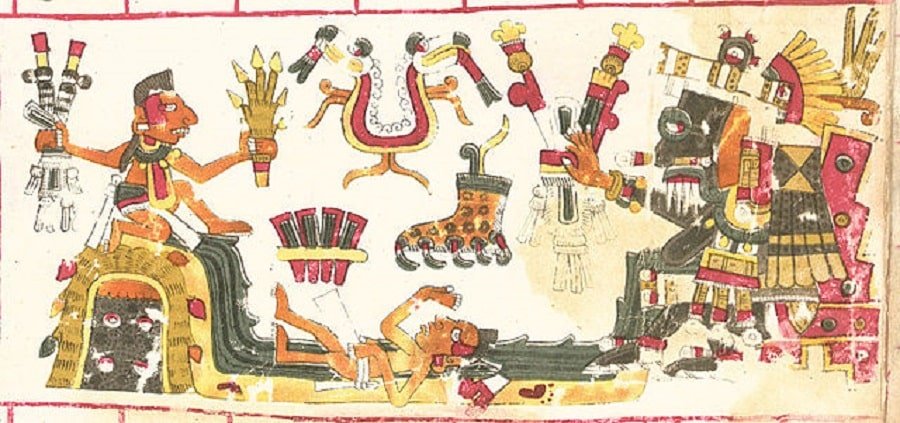
Incarnations and Tlaloques
The different incarnations are not unique to Tlaloc. Many Aztec gods and goddesses incarnate during every solar cycle. While Tlaloc was related to the Third Sun, the Aztecs believed that we’re actually living in the fifth sun cycle at this point. That means that almost every major Aztec god sees about four incarnations, with every new coming representing something different.
The incarnations of Tlaloc would be referred to as Tlaloques, which consisted of Nappateecuhtli, Opochtli, Yauhqueme, and Tomiauhtccuhtli. They were incarnations of Tlaloc, not reincarnations, which means that they would exist simultaneously and alongside each other.
The Tlaloques were a more human form of the original rain god, a phenomenon also seen in other Aztec gods like Quetzalcoatl. Outside their relation to rain, they had their own unique aspects and realms. Nappateecuhtli, for example, was the god of trade tools and hunting weapons, while Opochtli was the patron god of Chalco: a conglomeration of Mexican cities.
But, as part of the Tlaloques, they would be related to one of the rains. They, too, had the power to strike lightning by hammering the vases with a stick. Of course, only if Tlaloc and his wife instructed them to do so.
What Did Tlaloc Do for the Aztecs?
It should be clear by now that Tlaloc controlled the weather and the fertility of crops. Besides that, he was thoroughly related to the Aztec heavens. More specifically, Tlaloc ruled over the first of thirteen levels, called Tlalocan.
Tlalocan was a beautiful place with flowers, trees, and many crops. The greens could easily grow because of the perfect balance between rain and sunshine, providing an excellent climate for the abundance of life. The people who died because of Tlaloc would go to this beautiful place, the everlasting garden paradise.
Dying ‘because of Tlaloc’ basically meant that someone died violently from water or lightning-related causes. Think, for example, about people who drowned, or died because they were struck by lightning, or because of water-borne diseases (leprosy, for example). It’s not a great death. But then again, at least they could go to Tlalocan.
Rituals for Tlaloc-Related Deaths
The ones who died because of Tlaloc would not be cremated like the majority of people. Instead, they would be buried in a rather specific way.
Seeds planted on their cold faces represented the upcoming abundance of fertility. Also, their foreheads were covered in blue paint, representing the water. After people were painted, they were decorated with strategically placed pieces of paper. A digging stick that was used for sowing seeds was buried with them.
All these things helped the dead to arrive safely in Tlalocan, where they would be treated to the very best standards. In fact, they could pick whatever food they preferred, which normally included corn, squash, beans, or amaranth.
While in other religions going to heaven depends on your actions during your life, the Aztecs had a different perspective on how one would go to heaven. It was more so determined based on personal traits, and whether a particular god fancied them. Based on these traits, they would be devoted to one of the thirteen realms of heaven.
Going to any of the thirteen levels wasn’t standard, however. Most would just go to Mictlan, the Aztec underworld, without any discussion or motivation for it.
Temples and Worship of Tlaloc
As one of the most important Aztec gods, Tlaloc was worshiped and celebrated widely. Actually, he is believed to have multiple months of worship throughout the year. During these days and months of worship, he would receive many rich offerings from the Aztec people.
More specifically, the rain deity was worshiped in the months of Atlacahualo, Tozoztontl, and Atemoztli. Respectively, these months represent the 1st, 3rd, and 16th month of the Aztec solar calendar. That’s right, the Aztecs developed their own calendar which had a 365-day calendar cycle and a 260-day ritual cycle.
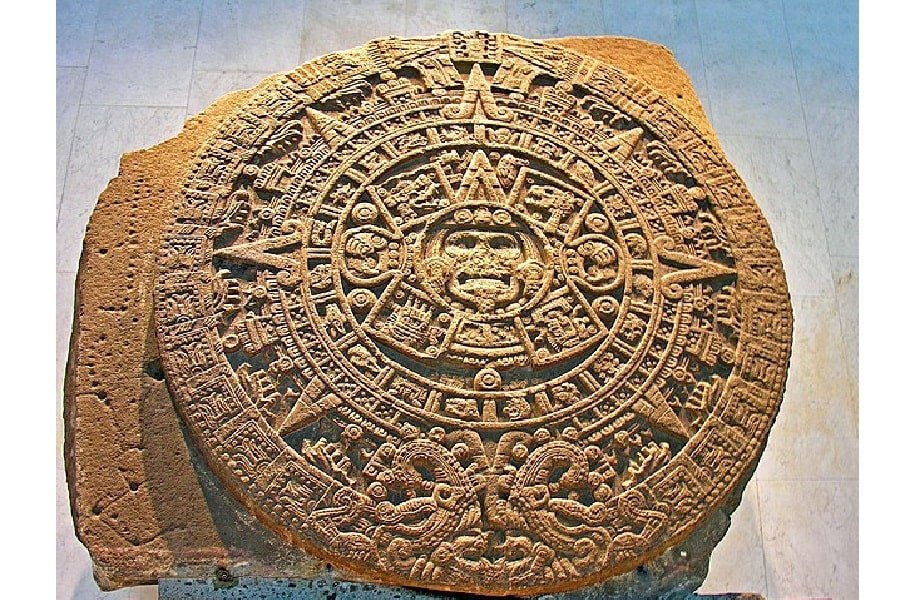
Child Sacrifice
The sacrifices were a bit more disturbing than average animal sacrifices, the ones found in other ancient civilizations. In fact, child sacrifice was one of the main mechanisms to secure the life-giving rain of Tlaloc.
For example, seven children were sacrificed during the annual Atlacahualo festival. These children were either slaves or second-born children of noblemen.
There wasn’t a lot of pity for the victims, even when the children cried before being sacrificed. The crying was actually seen as something good since the tears would signify the plentiful rains that were to come, or rather the good harvest that they would bring.
Temple at Mount Tlaloc
Another annual sacrifice took place at the sacred mountaintops of Mount Tlaloc. The mountaintop of Tlaloc’s home is a fascinating place and was most likely used for astrometric and meteorological observations. The Spanish conquistadors couldn’t care less, however, and destroyed much of the archaeological evidence that affirmed the astronomical knowledge of the Aztecs.
The temple was also built strategically because of its panoramic view. Because of this, the Aztecs were able to note the patterns of the weather and forecast rains. It allowed them to manage their crops more adequately, resulting in an efficient agricultural system that could feed the Aztec empire.
Heaven on Earth
The temple at Mount Tlaloc was also seen as the earthly reproduction of Tlalocan, the heavenly realm over which Tlaloc presided. Because of this, it was an important pilgrimage site where people came to ask specific favors of the god.
The temple is located about 45 kilometers from the closest known living place of the Aztecs. There were plenty of other Tlaloc temples in other Mexican cities, but the Aztecs made an effort to go all the way to Mount Tlaloc to worship the Aztec rain god.
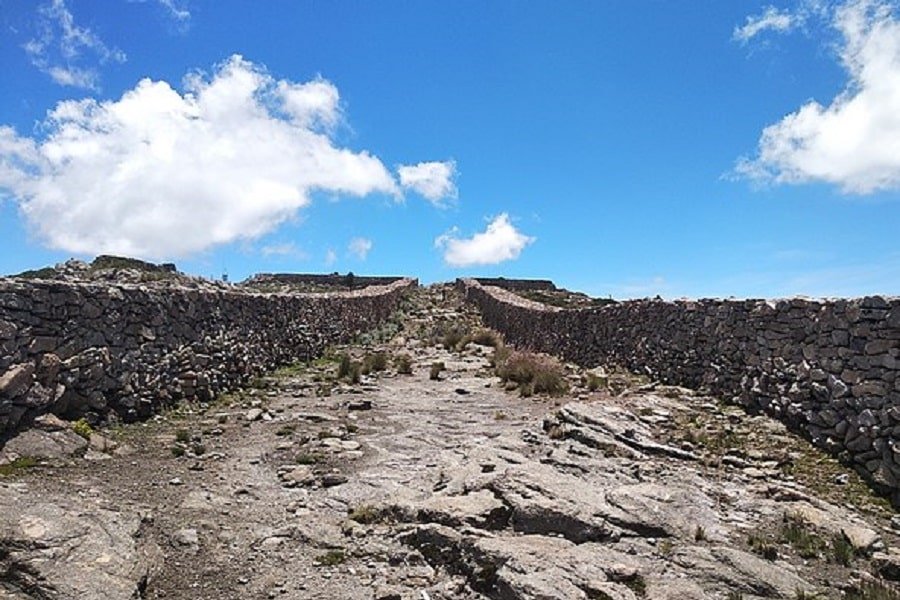
Templo Mayor
One of the other places of worship was at the main pyramid of the Aztec empire, called the Great Temple (or, Templo Mayor). It was located in the Aztec capital Tenochtitlán, today’s Mexico City. The temple of Tlaloc was one of two temples erected at the top of Templo Mayor.
READ MORE: Pyramids in America: North, Central, and South American Monuments
One of the temples was dedicated to Tlaloc, located on the northern side of the pyramid. This positioning represented the wet season and the summer solstice. The second temple was dedicated to Huitzilopochtli, a great Aztec war god. It is believed that his temple was the opposite of Tlaloc’s temple, signifying the dry season.
Priests of Tlaloc
The specific temple of Tlaloc was called a ‘mountain abode’. The steps leading up to the temple of Tlaloc were painted blue and white, representing water and the sky. Archaeological evidence suggests that the temple was subject to rich offerings, including coral, shells, and other sea life.
The one who would be the spokesperson of Tlaloc was a high priest, who was given the name Quetzalcoatl Tlaloc Tlamacazqui.
Do People Still Worship Tlaloc?
Because Tlaloc was such an important god, you might be wondering whether people still worship him. After all, the Spanish conquistadors weren’t able to destroy the whole of Mount Tlaloc.
The question about his worship is quite legitimate, because even 500 years after the conquest of Mexico, Tlaloc is still worshiped amongst a couple of peasant communities in central Mexico. Specifically, in an area called Morelos.
Worshiping Tlaloc is still an integral part of the cosmovision in Morelos, allowing ancient traditions to be reproduced to this very day. The agricultural societies are still making offerings to the caves that exist near the planting field.
Remember, Tlaloc was believed to live in the mountain caves rather than on top of the mountain. Making offerings to the caves, therefore, makes perfect sense and is in line with the centuries-old tradition. The offerings include fine scents, food, and pumpkin seeds.
Transformation of Tlaloc’s Worship
The aim of worshiping the rain gods nowadays is to procure a good harvest, avoid famine, and overcome food shortages. So that hasn’t changed since the days of the Aztecs. But, the exact way in which the rain deity is worshiped did change a bit, however.
Because of the (forced) integration of Christian beliefs, Tlaloc itself isn’t really worshiped as directly as he once was. The worship of the pre-Hispanic deity was replaced by that of Catholic saints.
Different communities have different saints that are worshiped, but one example is St. Michael the Archangel. But, he is not just worshiped as a rain god. He is actually believed to have inherited the powers of Tlaloc, emphasizing the connection to the Aztec god of rain.
In other cases, the Christian saints and pre-Hispanic rain deities are worshiped simultaneously. In Morelos, a well-known example is la acabada. Here, inhabitants of the area celebrate a religious mass honoring San Lucas, but also perform an offering festival for the Aztec god of rain.
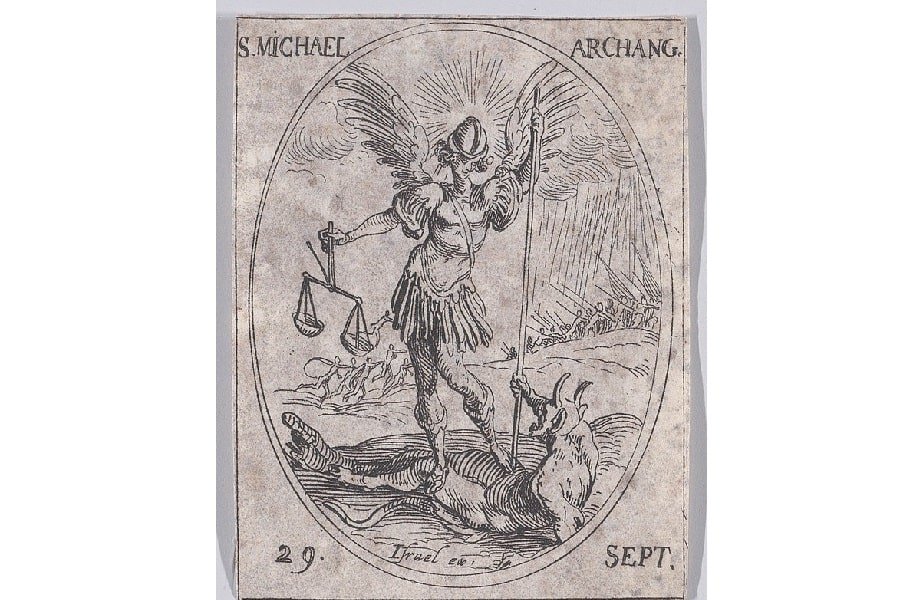
Depiction and Iconography of Tlaloc
The temples in Mexico City and the surrounding lands definitely had a couple of important Tlaloc temples. But how do we know that these were specifically dedicated to the Aztec water god?
That has mostly to do with the stone images that could be found at these temples. It shows that Tlaloc is potentially one of the most documented and recognized Aztec gods.
Tlaloc’s Appearance
Depictions of the Aztec rain god can predominantly be categorized into two different groups. In both groups he is shown with great rings around his eyes, sometimes interpreted as goggles. Also, both show him with several long fangs that resemble jaguar teeth, while often accompanied by the Tlaloques.
The first group of depictions shows him as a man with a five-knot headdress, chewing on a water lily while holding a grand staff and vessel. The second group of Tlaloc depictions shows him with a long tongue and four smaller fangs, wearing a headdress that only consists of three different elements.
Earliest Depictions
The earliest of such depictions were found in Tlapacoya, an important archaeological site south of Mexico City. Mostly vases were found with depictions of Tlaloc, who was often playing with his characteristic lightning bolts.
The images date back to 1400 years before the Aztecs even became a real thing. So it’s certain that Tlaloc has been worshiped for quite a long time. What his role was in these earliest stages is, however, a bit unclear. Because he is often depicted with lightning bolts, he might’ve been more so the god of thunder as opposed to the god of water.
Tlaloc Jargon
Some analyses of the temples at Teotihuacan show that Tlaloc is sometimes related to certain iconography, while there is very little reason to do so. These depictions are included in modern-day literature, making the presence of Tlaloc in Aztec temples seemingly bigger than it actually was. It’s a bit problematic, but relatively minimal when compared to some other Aztec deities.